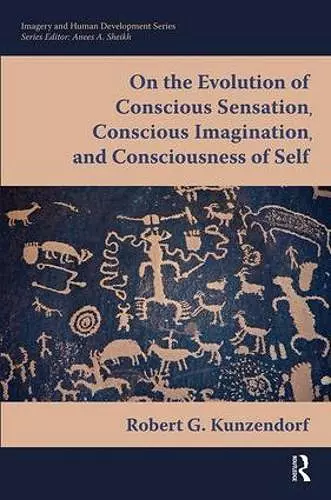On the Evolution of Conscious Sensation, Conscious Imagination, and Consciousness of Self
Format:Hardback
Publisher:Baywood Publishing Company Inc
Published:30th Oct '15
Currently unavailable, and unfortunately no date known when it will be back
This hardback is available in another edition too:
- Paperback£56.99(9780895039026)

Philosophical 'thought experiments' invoking inverted spectra, zombies, et cetera suggest that conscious sensations have no function, and psychological studies finding no correlation between vivid visual imaging and visual problem solving suggest that conscious images have no function. Furthermore, both philosophical and psychological theories suggest that self-consciousness has no function. Countering such suggestions, the post-Darwinian double-aspect theory which Professor Robert Kunzendorf's introduces in the first chapter of his monograph On the Evolution of Conscious Sensation, Conscious Imagination, and Consciousness of Self points to evolutionary functions of certain sensations, youngling vivid images, and self-consciousness. Kunzendorf's second chapter presents evidence that the most primitive sensation-pain, the subjective aspect of free nerve endings or nociceptors-has a survival-promoting function. But as the pressure nociceptor mutates into a touch receptor, the heat nociceptor into temperature receptor, and the chemical nociceptor into a taste receptor, the painful qualia of these nociceptors evolve respectively into touch sensation, temperature sensation, or taste sensation-painless sensations that add no survival benefit to their receptor's physical aspect. Building on evidence that retinal receptors embodying visual qualia evolved from primitive eyespots responsive to injurious 'heat at a distance' or painful light, the third chapter presents evidence that visually imagined sensations are the subjective qualities of retinal receptors that are corticofugally innervated in warm-blooded animals-for the developmental purpose of testing cortically hypothesized sensory-motor rules that have greater survival value than cold-blooded stimulus-response associations. The fourth and final chapter focuses on self-conscious reality-testing and on visuo-spatial self-conceptualization, and presents evidence that such manifestations of self-awareness evolve only in those warm-blooded animals whose rule-developing youth lasts two years or longer-that is, those mammals and birds whose survival during the imaginal testing of rules is subjected to prolonged risk if self-consciousness that one is imaging sensations (rather than perceiving sensations) is absent.
"On a rare and momentous occasion, an individual will read a discourse so compelling and so powerful as to completely revolutionize the way the individual perceives and thinks about everything. I do not believe it to be a stretch to say that Robert Kunzendorf’s recent monograph, On the Evolution of Conscious Sensation, Conscious Imagination, and Consciousness of Self, has the necessary ingredients to be such a force of metamorphosis.
-Jonathon K. Frost in Imagination, Cognition and Personality: Consciousness in Theory, Research, and Clinical Practice, 2016, Vol. 36(1) 85–88
"This monograph is an excellent exposition of topics from the point of view of a post-Darwinian. Professor Kunzendorf has tackled the evolution of sensation, imagination, and the concept of self within the broader context of consciousness. To my knowledge, this has never been attempted before, and, as such, this book represents an important contribution to the literature of both philosophy and psychology. Anyone interested in the topic of consciousness should read this well-written, scholarly work."
-Benjamin Wallace, professor emeritus of psychology at Cleveland State University, co-author of Consciousness and Behavior
"For anyone intrigued with psychological theories of consciousness, this pioneering new book provides an original evolutionary perspective. Robert Kunzendorf draws on his breadth of scholarship in reviewing and critiquing historic thinkers, from philosophers Descartes and Leibniz through the psychological introspectionists and psychophysicists to recent neuroscientists and cognitive scientists. He then presents a carefully reasoned case for an evolutionary view of consciousness and imagery, positing the mechanisms by which sensation developed into consciousness and then into self-consciousness in large-brained, slow-maturing animals—including humans. A unique, absorbing work."
-Deirdre Leigh Barrett, PhD, author of The Committee of Sleep, teaches at Harvard Medical School
ISBN: 9780895039019
Dimensions: unknown
Weight: 294g
138 pages